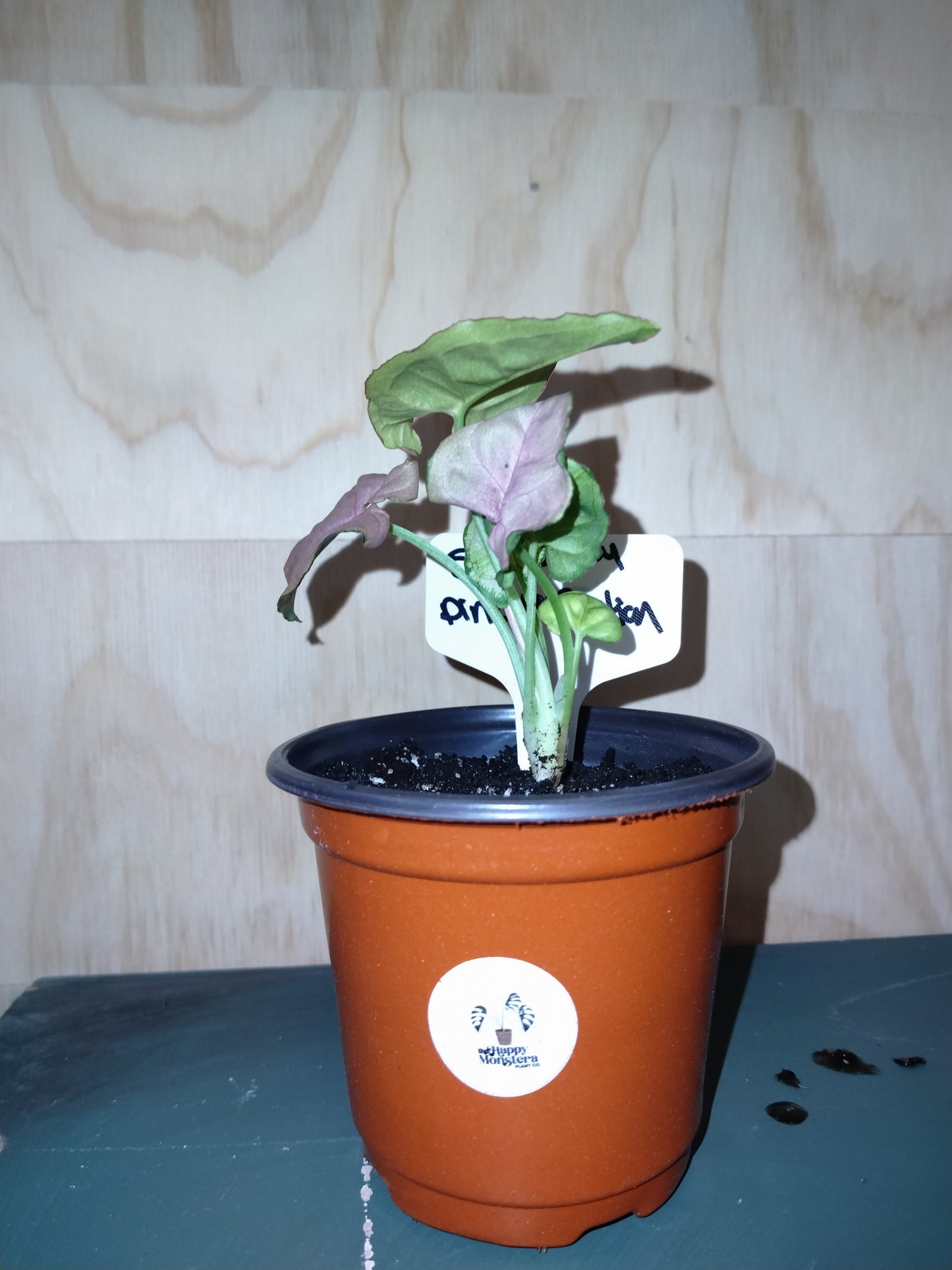The Happy Monstera Plant Co
syngonium pink perfection
syngonium pink perfection
Couldn't load pickup availability
🌿 Basic Info
-
Botanical name: Syngonium podophyllum ‘Pink Perfection’
-
Common names: Pink Perfection, Pink Dream
-
Family: Araceae (aroid family)
-
Origin/type: Cultivar of Syngonium podophyllum, selected for its strong pink variegation.
🎨 Appearance & Traits
| Feature | Description |
|---|---|
| Leaves | Arrowhead or ivy-like in shape when young; as they mature, they may develop more pronounced lobes, depending on light and training. |
| Color / Variegation | Leaves emerge with soft pink/blush tones, often with green margins or veins. The pink is dominant, giving a “painted” or “blush” look. |
| Growth Habit | Starts compact, then tends to trail or climb (if given support). If pruned and trained, can be kept bushy. |
☀️ Light
-
Needs bright, indirect light for best color. Pink tones are more vivid under good light.
-
Too little light → pink fades, more green may show.
-
Avoid harsh direct sunlight (especially midday) that may scorch leaves.
💧 Water & Soil
-
Soil should be well-draining. Aroid mixes with bark, perlite, peat or coco coir work well.
-
Keep soil evenly moist, but not soggy. Allow the top inch or so (or ~40-50% of the substrate) to dry before watering again.
🌡️ Temperature & Humidity
-
Ideal temperature: ~ 65-85°F (18-29°C)
-
Likes higher humidity, ~50-70% or more, to keep leaves healthy and color strong.
-
Protect from cold drafts or temperatures below ~60°F.
🌱 Growth & Maintenance
-
Prune to encourage bushiness and manage size. Pinching back helps avoid legginess.
-
Can be grown trailing, potted, or trained on a moss pole or support.
-
Fertilize during active growth (spring to summer) with a balanced, diluted houseplant fertilizer. Too much nitrogen may reduce variegation.
⚠️ Common Challenges & How to Avoid Them
| Problem | Likely Cause | What to Do |
|---|---|---|
| Pink color fading / turning mostly green | Low light, not enough indirect light, overwatering, or high nitrogen | Move to brighter indirect light; adjust water; reduce N fertilizer; prune out very green leaves to encourage new pink ones. |
| Leaf burn / brown spots | Direct sunlight or heat exposure | Shift to more shaded, indirect location; use filtered light. |
| Leggy or sparse growth | Light too low; not pruned; plant not climbing or trailing properly | Increase light; provide support; prune to promote branching. |
| Pests (e.g., spider mites, aphids) | Dry air / poor environment / lack of hygiene | Increase humidity; inspect new growth; treat with insecticidal soap or mild solutions. |
Share

